Archives
- 2025-12
- 2025-11
- 2025-10
- 2025-09
- 2025-03
- 2025-02
- 2025-01
- 2024-12
- 2024-11
- 2024-10
- 2024-09
- 2024-08
- 2024-07
- 2024-06
- 2024-05
- 2024-04
- 2024-03
- 2024-02
- 2024-01
- 2023-12
- 2023-11
- 2023-10
- 2023-09
- 2023-08
- 2023-07
- 2023-06
- 2023-05
- 2023-04
- 2023-03
- 2023-02
- 2023-01
- 2022-12
- 2022-11
- 2022-10
- 2022-09
- 2022-08
- 2022-07
- 2022-06
- 2022-05
- 2022-04
- 2022-03
- 2022-02
- 2022-01
- 2021-12
- 2021-11
- 2021-10
- 2021-09
- 2021-08
- 2021-07
- 2021-06
- 2021-05
- 2021-04
- 2021-03
- 2021-02
- 2021-01
- 2020-12
- 2020-11
- 2020-10
- 2020-09
- 2020-08
- 2020-07
- 2020-06
- 2020-05
- 2020-04
- 2020-03
- 2020-02
- 2020-01
- 2019-12
- 2019-11
- 2019-10
- 2019-09
- 2019-08
- 2019-07
- 2019-06
- 2019-05
- 2019-04
- 2018-07
-
NPC L NPC Niemann Pick C like like
2019-11-26
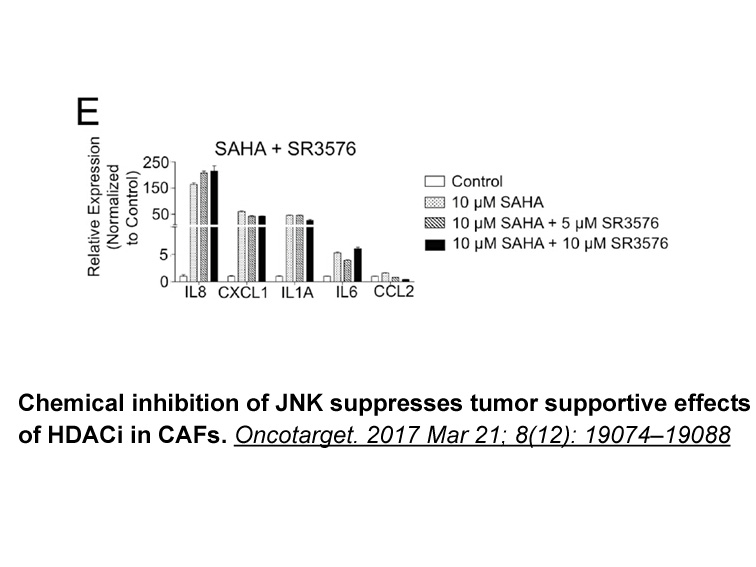
NPC1L1 (NPC1 [Niemann-Pick C-like-1]-like intracellular cholesterol transporter) is the rate-limiting transmembrane transporter for cholesterol flavopiridol mg from the intestinal lumen, and it mediates the absorption of both dietary and biliary cholesterol., , NPC1L1 is the target of the choleste
-
During the past decade it
2019-11-26
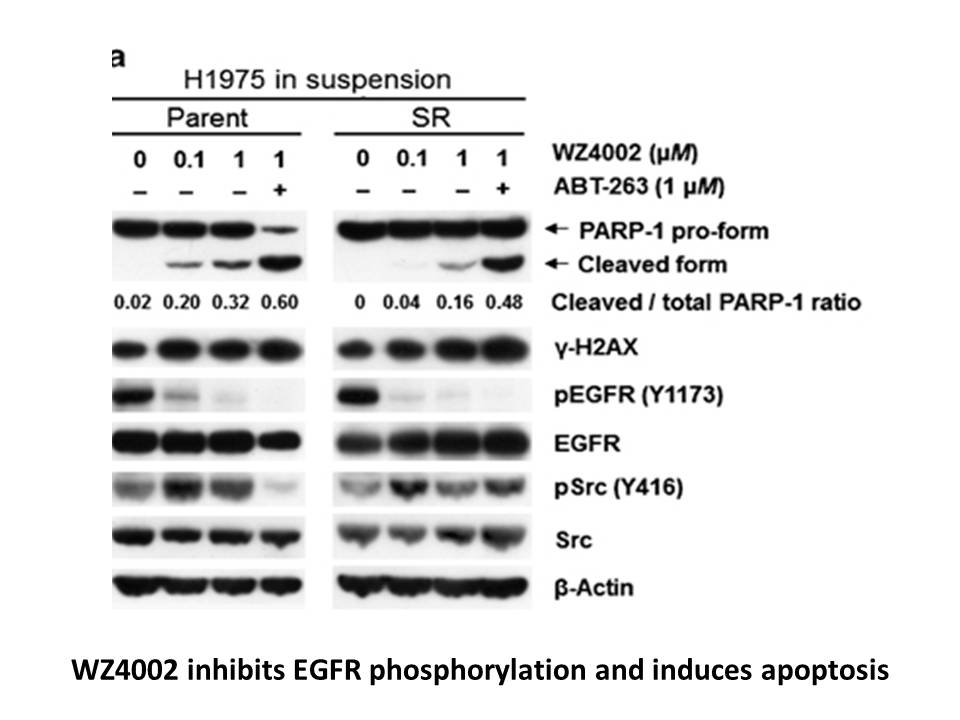
During the past decade, it became increasingly clear that the affinity and efficacy of small agonists acting on the orthosteric binding site of a GPCR can be modulated by ligands that bind to a topographically distinct (allosteric) binding site on the same GPCR molecule 33, 39, 40, 41, 42. This allo
-
br Discussion br Conflicts of interest br Acknowledgment br
2019-11-26
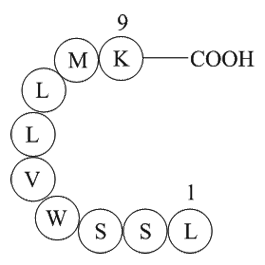
Discussion Conflicts of interest Acknowledgment Introduction Ewing\'s sarcoma (EWS) is a bone cancer arising mostly in children. In 1921, EWS was originally described as “diffuse endothelioma of bone” by Dr. James R. Ewing, an American pathologist [1]. In 1992, Ewing sarcoma breakpoint r
-
Targeting the MAPK pathway has attracted significant interes
2019-11-26

Targeting the MAPK pathway has attracted significant interest in cancer therapy. Efforts directly targeting RAS protein are believed to be very challenging in spite of the promise shown by a few RAS inhibitors in the early development stage. Clinical benefits achieved by BRAF and MEK inhibitors have
-
EphB and ephrinB mRNA levels were
2019-11-26
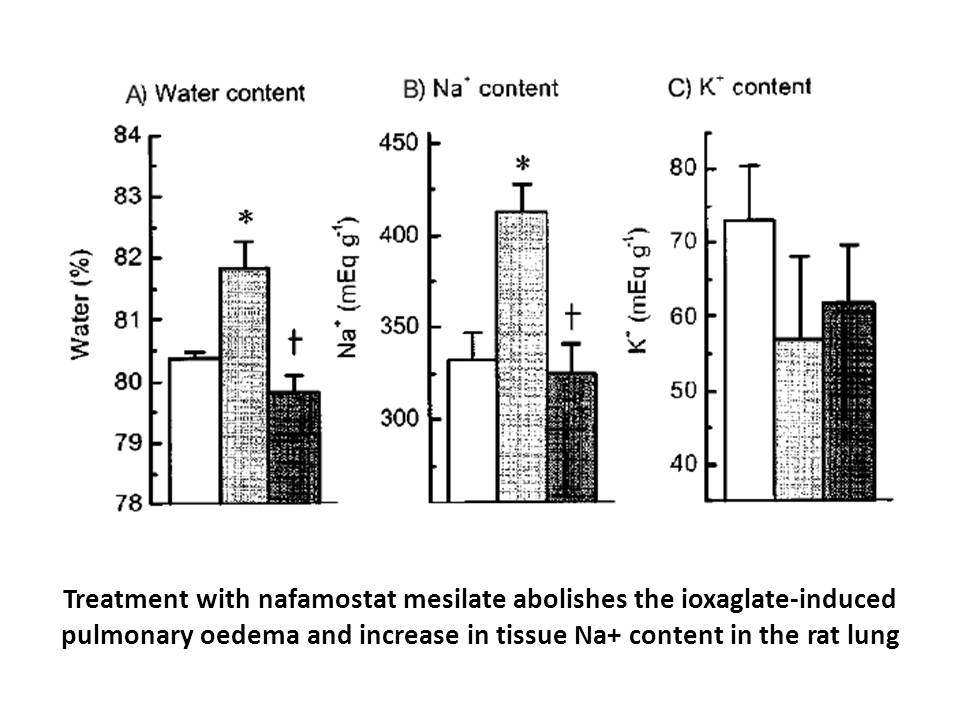
EphB4 and ephrinB2 mRNA levels were determined from three parts taken from each tumor, and each sample was analyzed in triplicate. The differences in the histoscores and mRNA levels of EphB4 and ephrinB2 were analyzed by Student\'s t test. The correlation coefficients were evaluated both by linear r
-
br Materials and methods br Result and discussion qRT PCR
2019-11-26
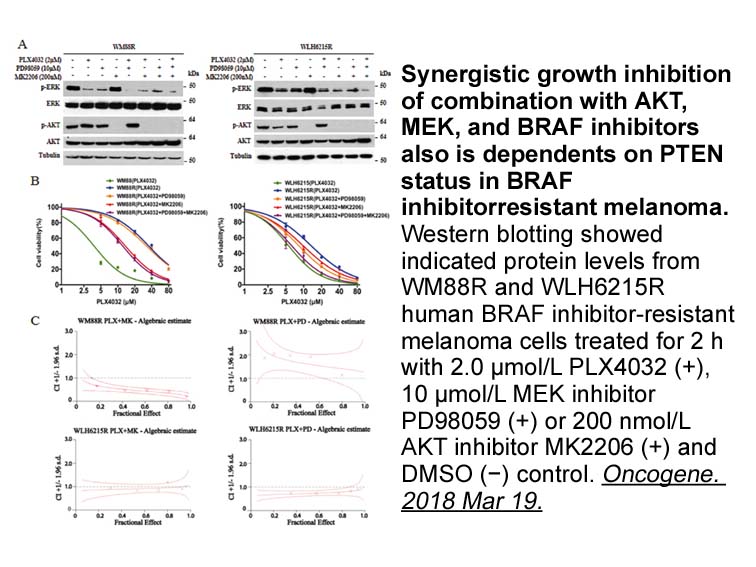
Materials and methods Result and discussion qRT-PCR was utilized to explore the effect of acetamizuril on the mRNA level of enolase. The results were analyzed according to the Livak 2−ΔΔCT method (Schmittgen and Livak, 2008): the mean CT of the enolase in treated and untreated samples was 29.8
-
STF 083010 There are conflicting studies on ET axis and
2019-11-26
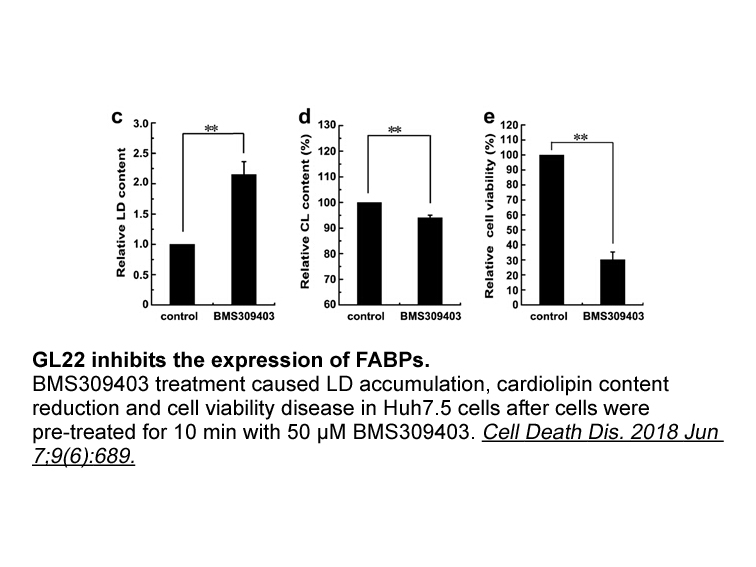
There are conflicting studies on ET axis and its relationship with clinicopathologic parameters in various cancers. Endothelin axis expression in the tissue and in blood has been associated with advanced cancer characteristics in colorectal, breast, and prostate cancer, while showing no linkage to c
-
Regardless of its effect on EBV infection the
2019-11-26

Regardless of its effect on EBV infection, the chemokine system has been found to be regulated in both nasopharyngeal cancer and Hodgkin lymphoma. As such, Hodgkin and Reed–Sternberg (HRS) cells from Hodgkin lymphoma and nasopharyngeal carcinoma cells have been shown to express CXCL8 and CCL17. Furt
-
Iodophenpropit dihydrobromide receptor br Methods Adult male
2019-11-25
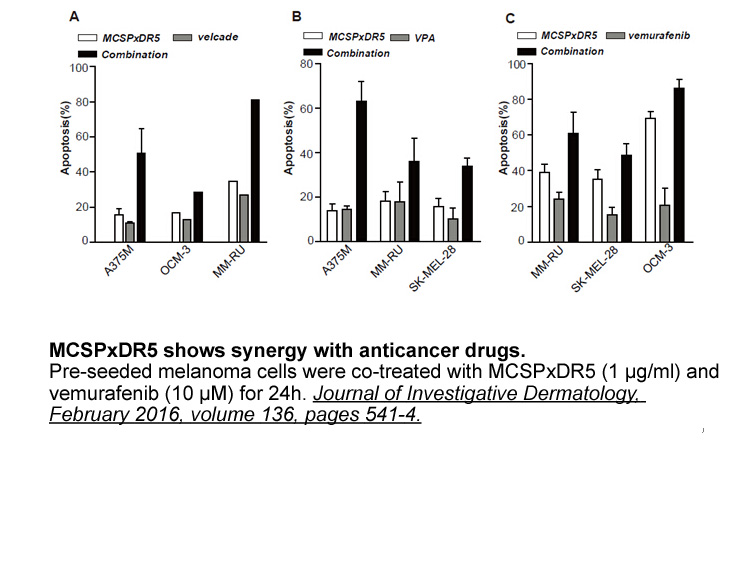
Methods Adult male B6, 129 CRHtklee mice (25–30g at the beginning of the experiments) that were wild-type (CRF1R+/+) and recessive homozygous or knockout (CRF1R−/−) were housed six per cage. Mice were 3–5months old and derived from mating CRF1R+/− breeders (Jackson Laboratory, California). Wild-t
-
We performed three baseline scans in two baboons and one
2019-11-25

We performed three baseline scans in two baboons and one blocking study by administering 1 mg/kg (i.v) meloxicam 30 min prior to [C]TMI injection (injected activity 175.75 ± 18.5 MBq, mass of unlabeled TMI blood (R)-(-)-Niguldipine hydrochloride synthesis barrier (BBB) and retained in brain with a
-
MK-2206 Dose response analysis Fig can be performed on cells
2019-11-25
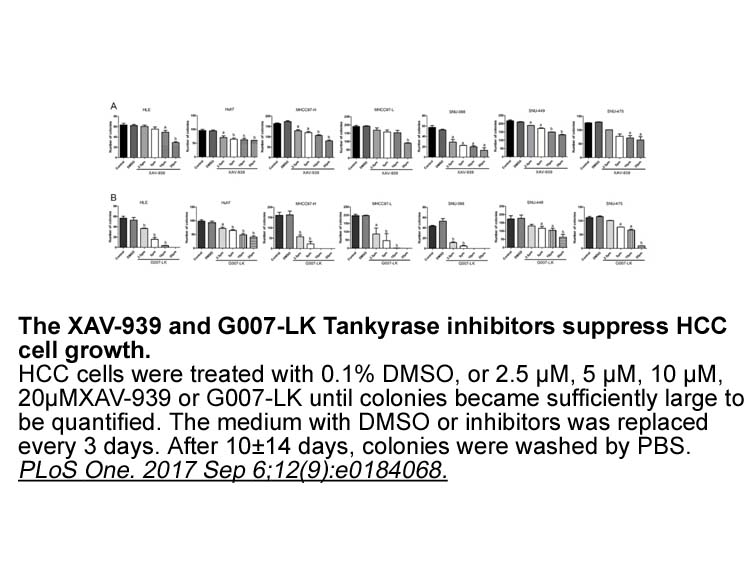
Dose response analysis (Fig. 2) can be performed on MK-2206 in culture, in tissue, in animals or even in patients. Many different responses can be measured, including mRNA levels, reporter gene activity, gene product (e.g. enzyme) activity or even physiological functions such as inhibition of ovulat
-
br Materials and methods br Results br Discussion
2019-11-25
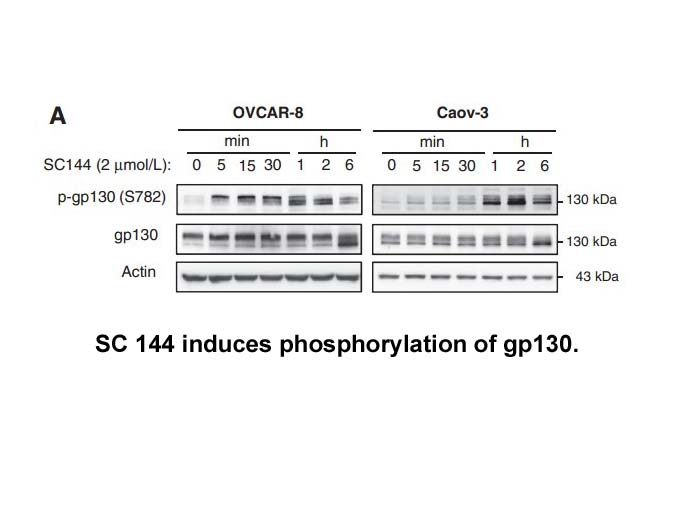
Materials and methods Results Discussion DUSP1 is a member of the subfamily of the Dusl specific phosphatases (DUSPs). High levels of DUSP1 observed in lung, liver and placenta, and low levels have been found in the LDN193189 Hydrochloride and kidney. DUSP1 has been shown to be elevated in
-
One possible pitfall of using EPAC
2019-11-25
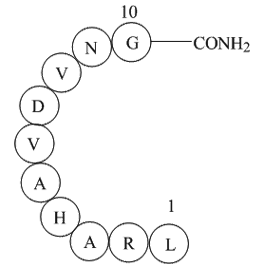
One possible pitfall of using EPAC2 activators in the treatment of T2DM is their potential to increase glucagon levels. As discussed previously, although the ability of EPAC2 to increase glucagon expression and production is controversial, several studies show that this protein increases Gcg mRNA le
-
A robust meta analysis of randomized clinical trials
2019-11-25

A robust meta-analysis of 22 randomized clinical trials found that application of ischemic preconditioning strategies reduce ventricular arrhythmias [3]. Additionally, it was demonstrated that remote ischemic perconditioning (perRIC) induces immediate cardioprotection during ongoing ischemia by atte
-
The potential existence of ER stress
2019-11-25
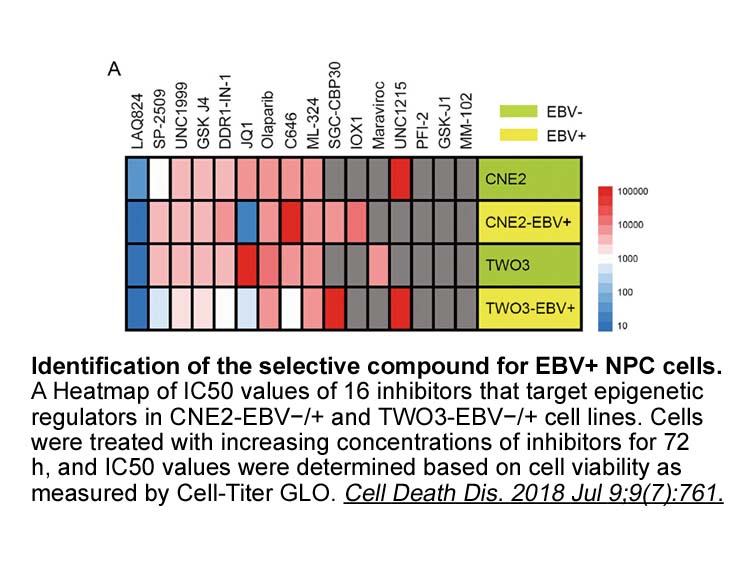
The potential existence of ER stress was first examined in EVTs in placental bed biopsy specimens obtained from pregnancies complicated by early-onset preeclampsia. It was then tested whether ER stress can modulate MMP-2 activity before elucidating the role of proinflammatory cytokines in the induct
15532 records 911/1036 page Previous Next First page 上5页 911912913914915 下5页 Last page